Tree swallows are tricky birds to attract to a backyard. This is because they don’t eat traditional bird seed like many other backyard birds.
To attract tree swallows, focus on creating a clean, open backyard in which they can fly around. Give them clean water, nest boxes, and nesting materials. When it comes to food, don’t use pesticides, and let the tree swallows eat any pesky insects you may have.
Use these and the other tips below to draw in more tree swallows to your backyard.
7 Ways To Attract Tree Swallows To Your Yard
1. You Don’t Need To Use Feeders
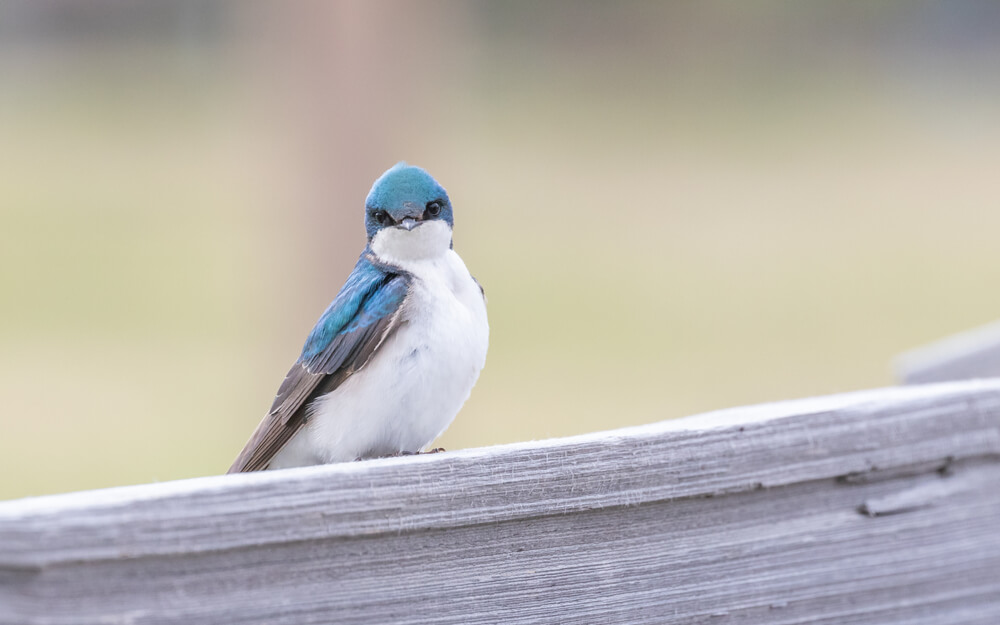
Most backyard birds are easy to attract with traditional bird seeds. Others, like blue jays, may like a little something extra, but you can still add it to a regular feeder.
Tree swallows are special because it’s very rare for them to eat at artificial bird feeders! This is because they eat insects almost exclusively.
They may eat some plant matter if bugs are scarce, such as in the winter, but it’s uncommon.
So, if you want to attract tree swallows, don’t worry about feeders. You can still have them for other backyard visitors, but you don’t need to consider the needs of tree swallows.
They’ll be more than happy to snack on the bugs in your yard.
2. Avoid Insecticides
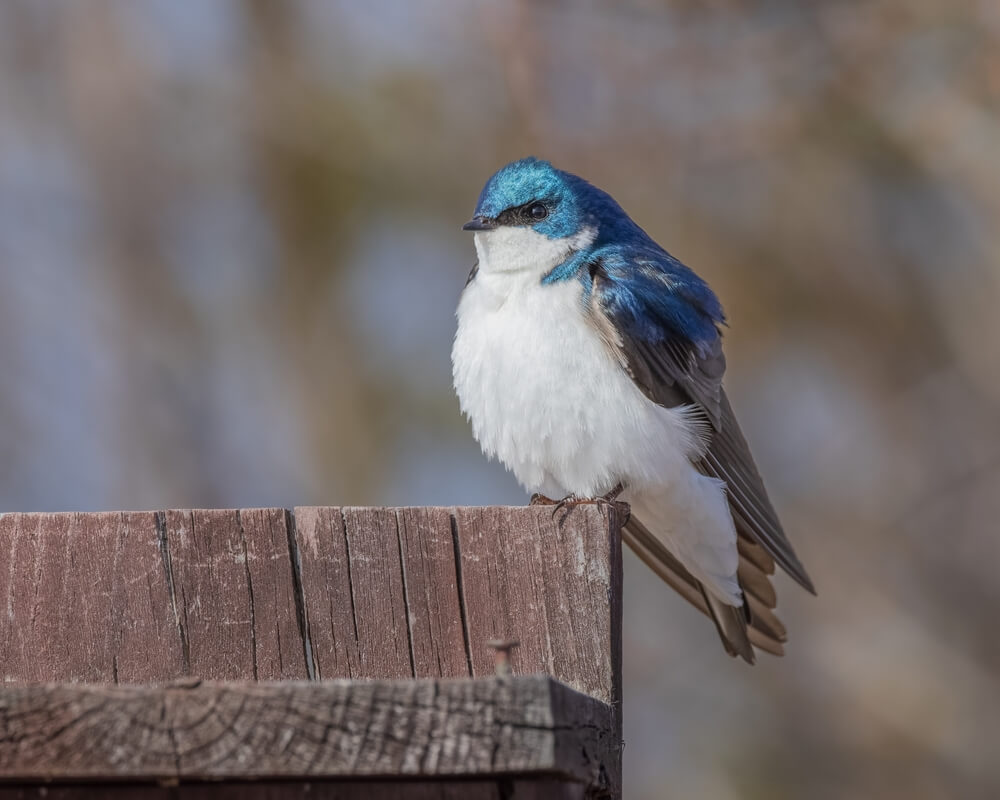
Speaking of bugs in your yard, don’t try to get rid of them with insecticides. Instead, let tree swallows use them as food.
Since tree swallows mainly eat insects, having a lot of insects around is a good way to attract the birds. Flying insects in particular are very attractive.
Tree swallows prefer to snatch bugs out of the air while they’re flying. They have special wide beaks that make it easier to scoop up insects.
If you have more insects on the ground or your plants than in the air, you should still avoid insecticides.
Pesticides of all kinds can be very bad for the environment. For example, they can cause illness in humans and animals, and contaminate groundwater.
These adverse effects can create a domino effect as well. If the insecticides have a harmful impact on bees, that can affect the pollination of flowers.
In turn, this can harm animals and even other plants that rely on the spread of those flowers.
Even if your tree swallows aren’t directly impacted by an insecticide, they can still suffer consequences. Insecticides can cause a drastic decline in their natural food supply or cause contamination that makes them sick.
In short, leave the flying insects in your yard alone and let tree swallows do the work for you. You’ll control your bugs and the tree swallows will have a safe and abundant food supply.
3. Provide Moving Water

All birds need to drink and bathe. So, if you offer a safe, clean source of water, tree swallows will visit your yard more often.
A pedestal bird bath is a popular water feature in many gardens. But you can attract even more swallows with a moving water source.
Tree swallows are very acrobatic birds and spend a lot of time in the air.
They’ll often skim the surface of the water to take a drink instead of stopping at the edge. A larger bird bath with moving water, like a bubbling fountain or waterfall feature, will attract them the most.
You can also set up a mister that’s easy for the tree swallows to fly through for a quick refresh.
4. Tree Swallows Like Open Spaces
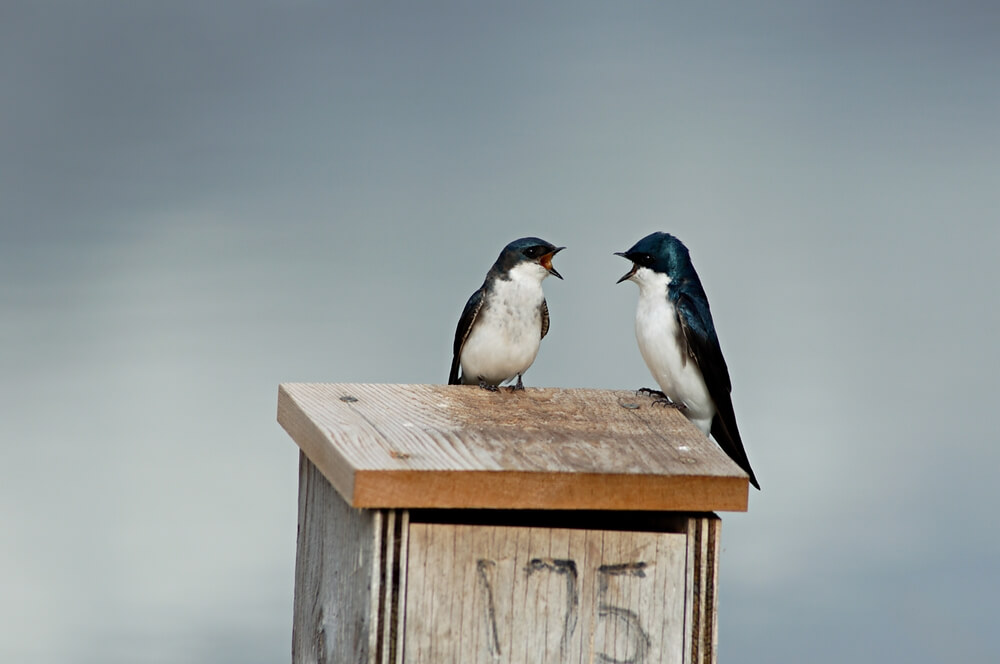
As talented fliers, tree swallows enjoy having plenty of open air. They find larger, open backyards more appealing than ones with tall foliage or fixtures.
Trim your tree branches well so they take up less space. And think twice before planting more if you want to draw in tree swallows.
You should also avoid tall sheds and outdoor furniture like umbrellas. These will all just get in the way of the tree swallow’s airspace.
5. Build Nest Boxes

If a tree swallow is going to land for anything, though, it’s definitely for the breeding season.
Tree swallows are cavity nesters, which means they like building nests in enclosed spaces. These can be the hollows of trees, dead logs, and, of course, nest boxes.
Having a nest box or two in your yard provides safe and easy-to-access places for tree swallows to nest. They can also reduce the need to fight for natural nesting spots.
You can buy a nest box or build one for yourself. Remember to place it out in the open away from any obstructions.
6. Provide Feathers For A Tree Swallow Nest
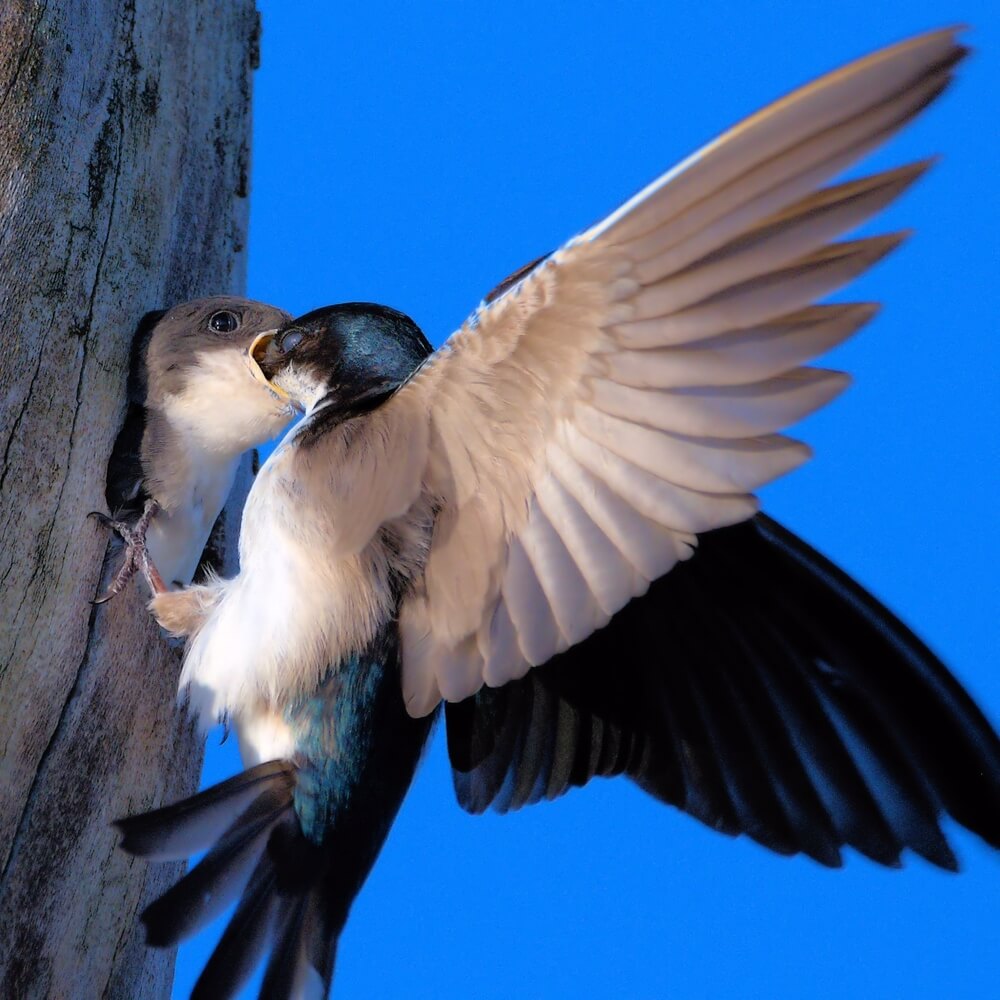
Female tree swallows like to gather materials for nesting close to their nest site, within 100 feet.
Try placing a small pile of grass trimmings near a nest box. Breeding tree swallows may then find it easier to nest there.
In addition to grass, tree swallows like to line their nests with feathers after they lay their eggs. This may be to deter parasitism from other birds by hiding the contents of the tree swallow’s nest.
Add natural feathers like goose downs or any stray feathers you see in your yard near the nest box. This is a great way to encourage tree swallows to lay their eggs in your yard.
7. Tree Swallows Eat Egg Shells During Breeding Season

Just before and during the breeding season, tree swallows change their diet. In addition to insects, they’ll add calcium-rich foods like bones, clamshells, and eggshells.
This gives them the nutrients they need to lay their own eggs in the coming weeks. You can help facilitate this diet change by adding a “calcium pile” to your yard.
Instead of throwing out your eggshells, rinse them off and put them out in your yard. If you debone a fish for dinner, add the bones to the pile as well.
This is a great way to get the most use out of your animal products. In addition, it will help tree swallows recognize your yard as a great place to nest.
Frequently Asked Questions
When Do Tree Swallows Migrate South?
You can find tree swallows all over the U.S., but only at certain times of the year. They spend their nonbreeding periods below the Gulf of Mexico and parts of Florida and California.
Then, they migrate to breed much further north, only passing through parts of the U.S. south.
But when do this migration and breeding occur? Take a look at our handy chart below to determine when you can see tree swallows in your area.
| Region | Time of Year | Migrating/Breeding/Nonbreeding |
|---|---|---|
| Kansas, Nebraska, South Dakota | July-September | Migrating |
| Southeast Oregon and Nevada | July-September | Migrating |
| Southwest region | September-December | Migrating |
| Southeast below Tennessee | September-December | Migrating |
| Western region except for southeast Oregon and Nevada | April-July | Breeding |
| Midwest region except for South Dakota, Kansas, and Nebraska | May-July | Breeding |
| Southeast region including the north of Tennessee | April-September | Breeding |
| Northeast region | May-July | Breeding |
| Florida, Southern California | August-April | Nonbreeding |
What Do You Feed Tree Swallows?
Unlike many backyard birds, tree swallows do not eat bird seed. There isn’t much you can feed them that they can’t get from nature. That is, unless you want to release a cloud of bugs in your yard.
What you can do is let flying bugs inhabit your yard naturally instead of using sprays and other deterrents. Tree swallows eat almost exclusively insects.
Sometimes they will eat plant matter and fruit, so you can plant berry bushes, too. During the breeding season, you can feed your tree swallows eggshells to help them prepare to lay their own eggs.
In Summary
With their iridescent feathers and impressive flying skill, tree swallows can bring any yard to life. If you want to attract them to your own yard, use the helpful tips in our guide above. Soon, you’ll have a yard that tree swallows love to visit.







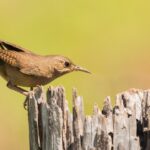

![Do Sparrows Eat Sunflower Seeds? [Favorite Types Explained] Do Sparrows Eat Sunflower Seeds? [Favorite Types Explained]](https://birdchronicle.com/wp-content/uploads/2022/10/sparrow-eating-seeds-on-hand-150x150.jpg)

